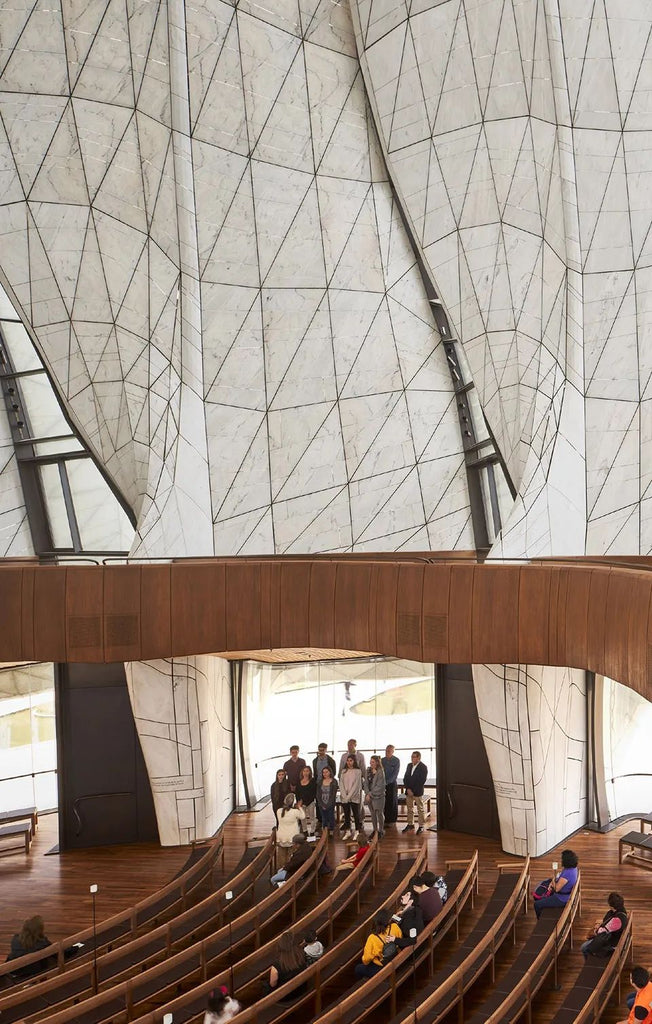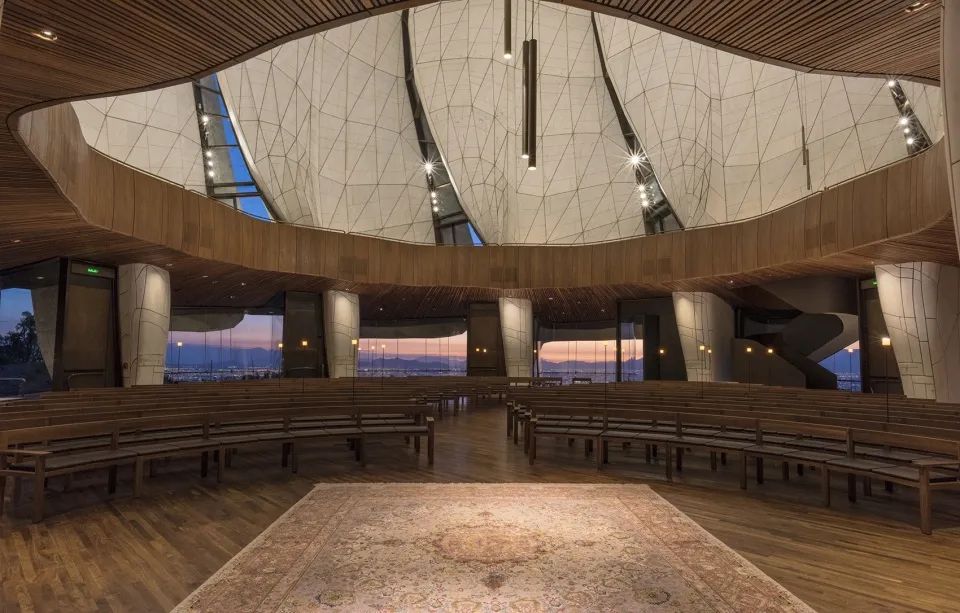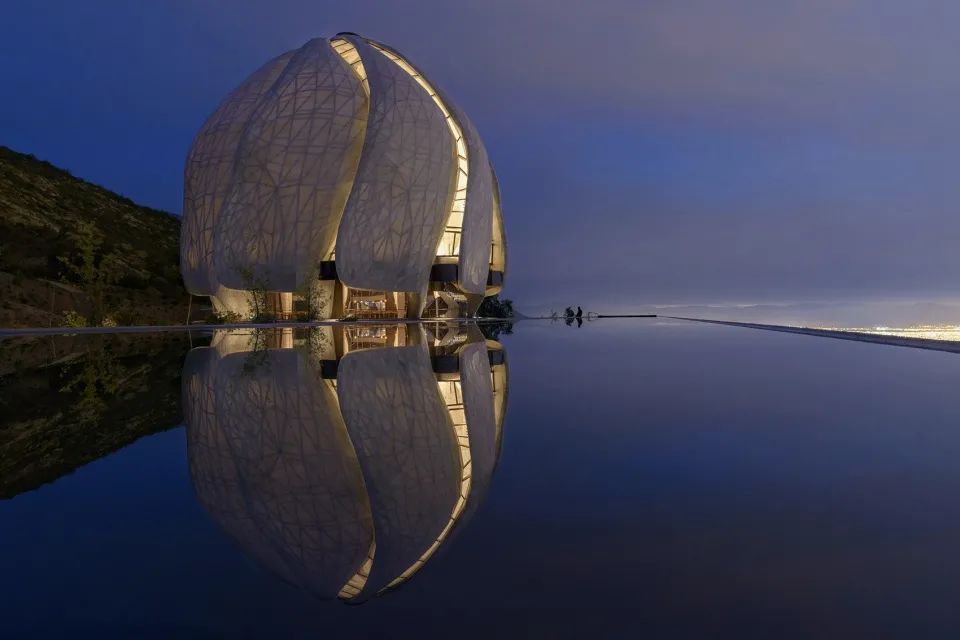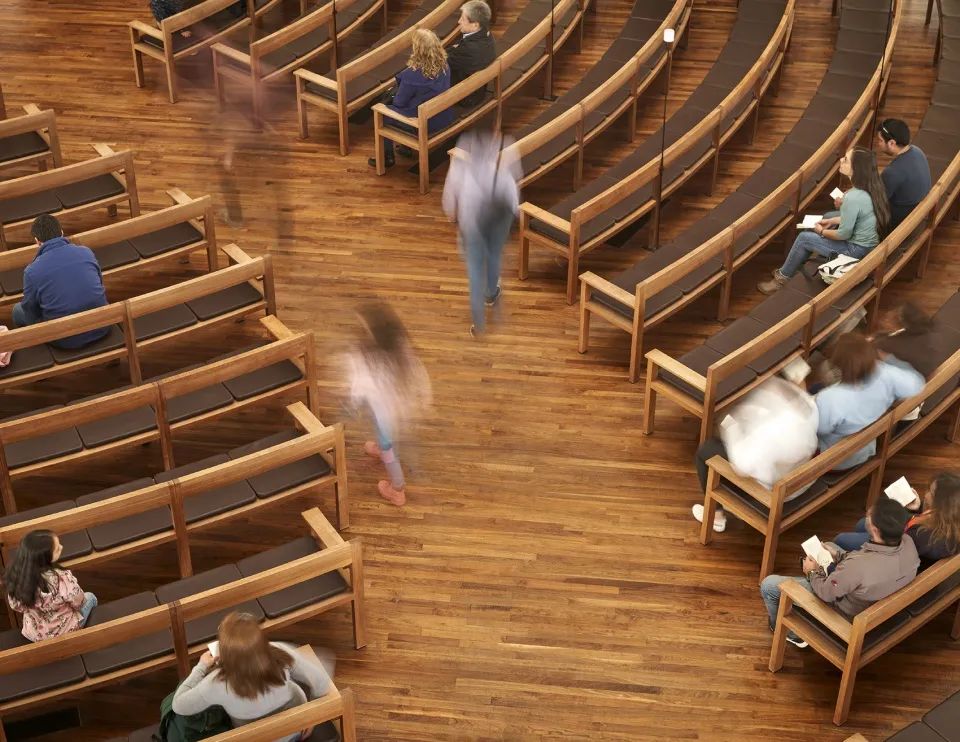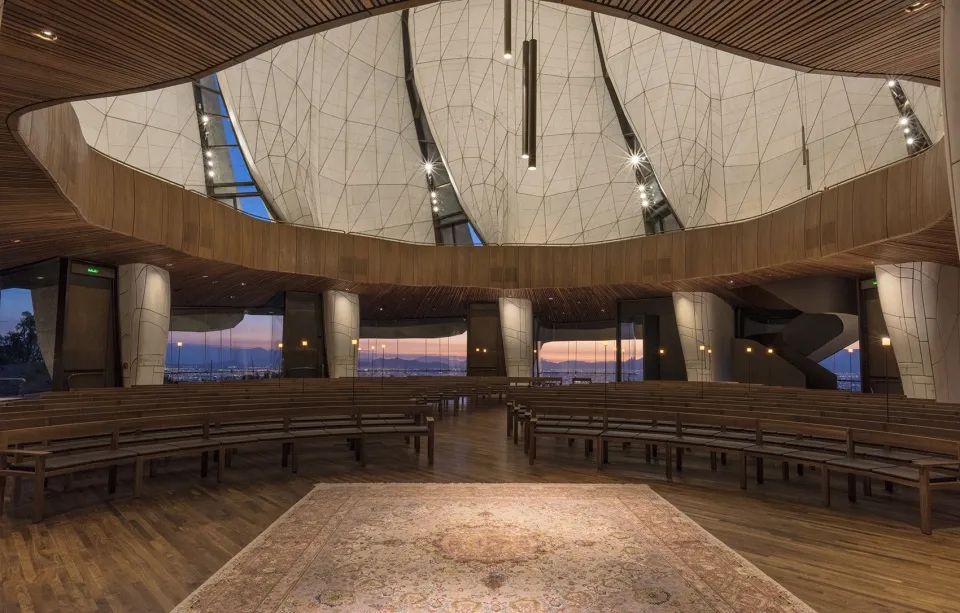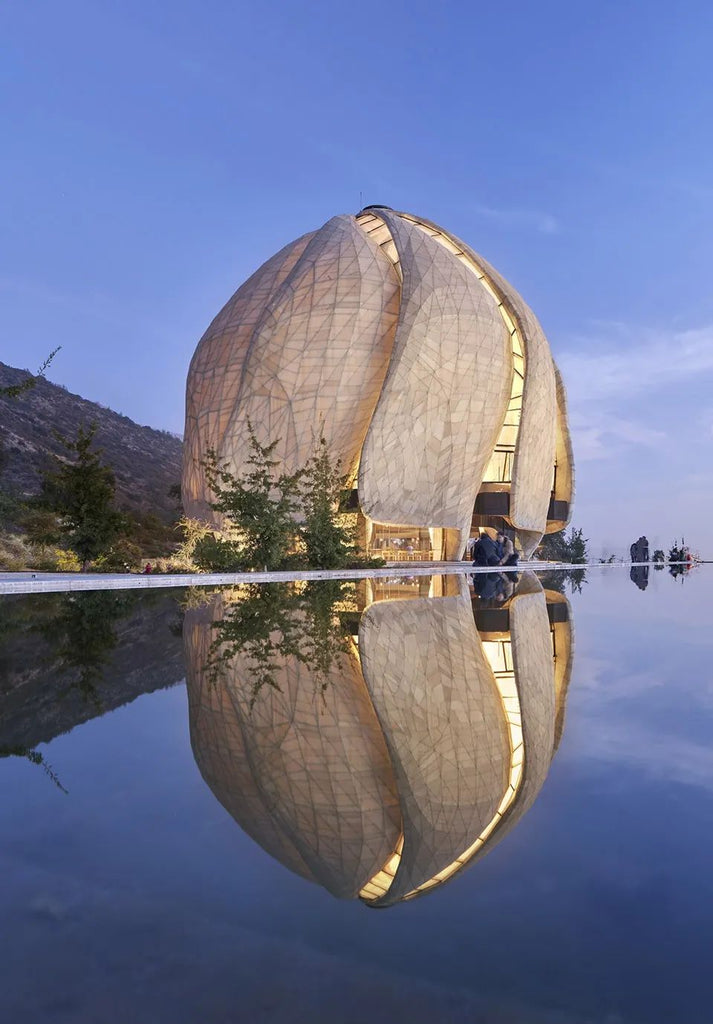
The South American Bahá'í Temple is located on the outskirts of Santiago, the capital of Chile, at the foot of the Andes Mountains. It is the eighth Bahá'í House of Worship in the world. The project was designed by the outstanding Canadian architect Siamak Hariri, and it took 14 years to complete the construction. It is an eternal and inspiring architectural achievement. It uses space and light, form and material as language to explain the philosophy and teachings of Bahá'í, making it a spiritual place for everyone.
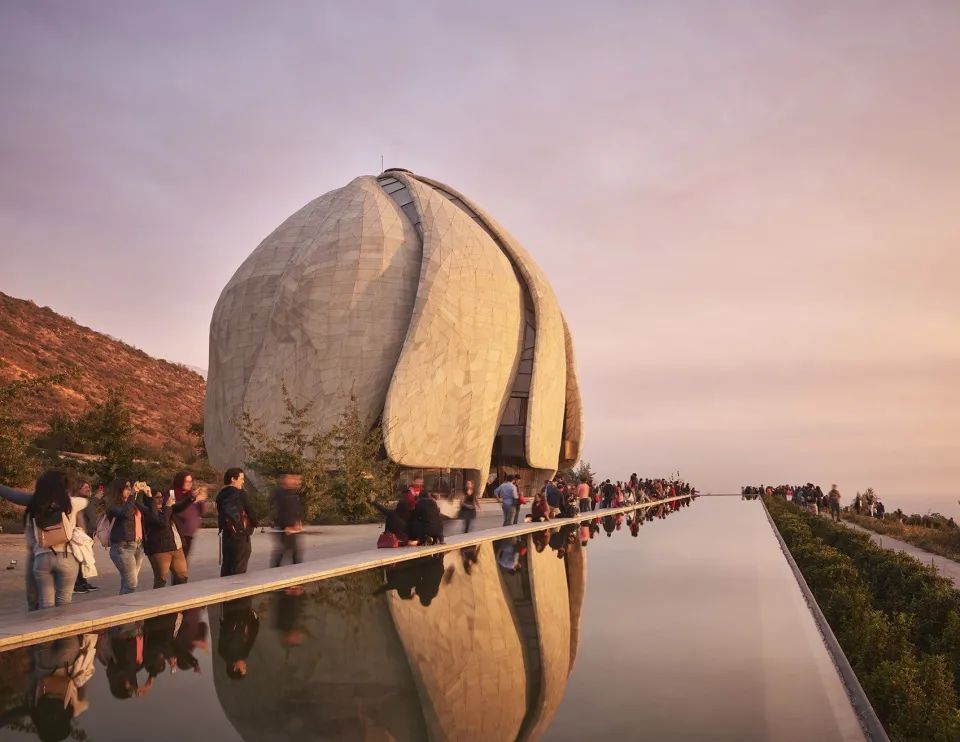
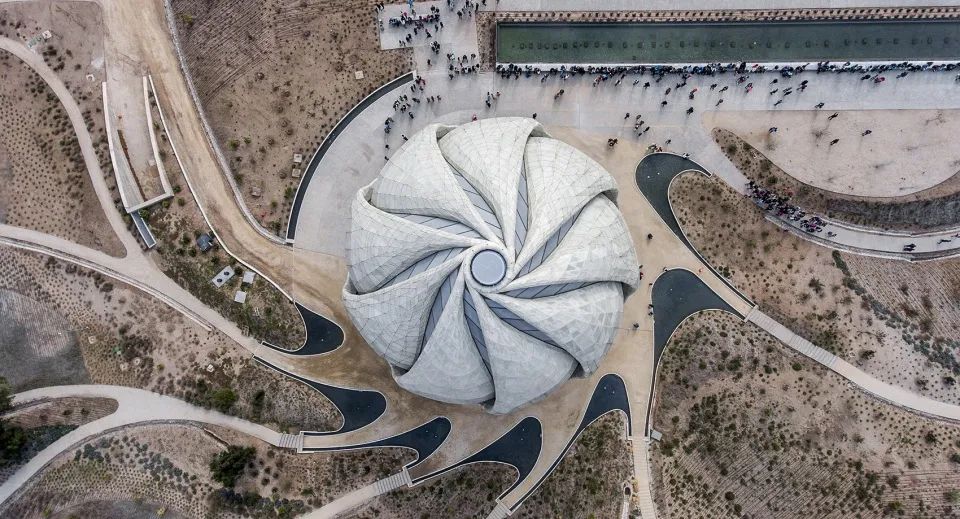
This was originally the golf course of the San Diego Elite Farm School. After 9 years, the site was redesigned into a public building open to the public of different backgrounds, religions and genders. "Building a sanctuary that welcomes all religions and cultures" is a challenge to architecture. It means that the architect Siamak Hariri has to think about what form to give it to make the building have this meaning. Facing this challenge, Siamak Hariri and his team gave up taking inspiration from other religious buildings. If the Bahá'í temple looks like a mosque, synagogue or church, it is very likely to alienate people who believe in other religions. Therefore, the openness and permeability of the site and structure are very important in architectural design. Structurally, the Bahá'í temples exhibit a universal attraction as a place for "people". The nine uniquely shaped "wings" form an elegant aggregation in a twisted posture, and finally converge in the top window opening, creating a light rhythm around the central space connected to the ground. The material on the outside of this structure is 1129 pieces of cast glass panels that have been tested and tested for four years, while the translucent marble that creates a white and warm texture comes from Portugal.
